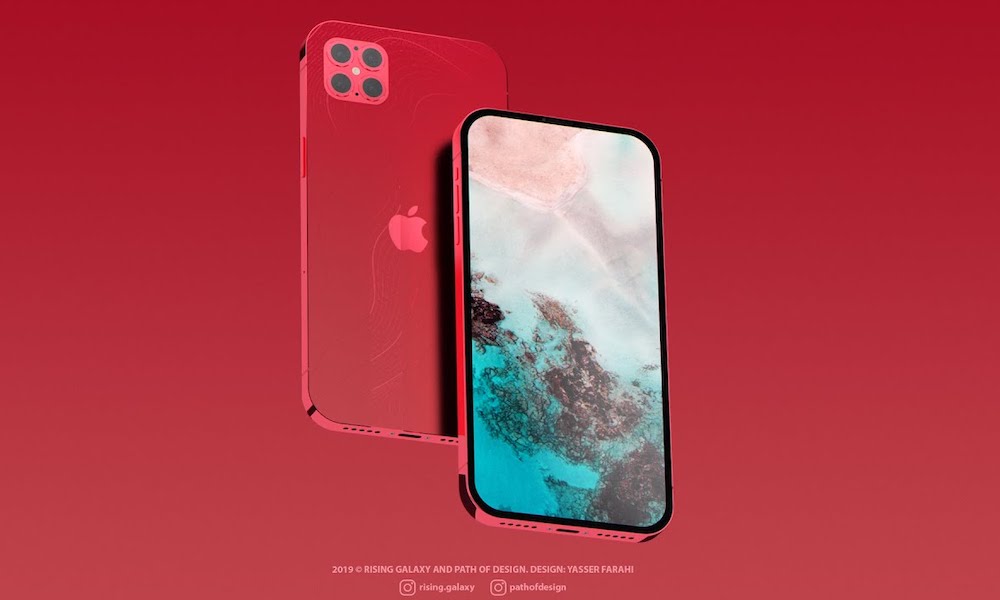The ‘iPhone 14’ Might Finally Ditch the Notch
 Credit: Rising Galaxy
Credit: Rising Galaxy
Toggle Dark Mode
Even though we aren’t yet anywhere near the release for this year’s “iPhone 13” model, that hasn’t stopped forward-looking analysts from sharing their predictions on what the 2022 “iPhone 14” might entail, and it’s already starting to sound interesting.
While these kinds of details may seem a bit premature, in this case they’re coming from the oft-reliable Ming-Chi Kuo, who has proven quite prescient in the past due to his close connections to Apple’s entire Asian supply chain, so it’s safe to say that you might be able to skip adding any doses of salt in this case.
While Kuo has already had quite a bit to share about the “iPhone 13” in recent weeks, his latest investor note doubles down on everything he’s predicted so for this year’s iPhone model, including the addition of 120Hz LTPO “ProMotion” display technology, and a reduced notch area, while also adding that Apple will not only continue to follow the same design as the iPhone 12, but also emphasizing that there will be four models — meaning the 5.4-inch iPhone mini isn’t going anywhere.
Of course, none of that is all that surprising at this point, and now that we’re getting a pretty good idea of what the “iPhone 13” (or “iPhone 12S”) will bring to the table, Kuo has set his sights on Apple’s plans for 2022 and beyond, and if his biggest prediction comes true, then we can say goodbye to the notch.
A ‘Punch-Hole’ Design
According to Kuo’s latest note to investors, as reported by MacRumors, Apple is already working on moving its TrueDepth camera system into a “punch-hole” design, similar to what’s been seen on some of Samsung’s recent Galaxy smartphone models.
While it’s unclear whether Apple will be ready to go all-in on this new design, it’s expected to at least come to the 2022 “iPhone 14 Pro” models, although he did suggest that Apple wants to bring it the entire lineup if it can source and produce enough components for the new design.
Notably, however, Kuo didn’t say anything about how Face ID might work in such a configuration, since one of the biggest challenges to reducing or eliminating the notch has been the multiple components that make up the TrueDepth camera system. While it’s conceivably possible that Apple could move away from Face ID favouring the in-display Touch ID technology that it’s been working on, so far, every report we’ve heard is that the new Touch ID feature would be complementary to the Face ID system, rather than acting as a replacement for it.
A few rival smartphone makers such as ZTE have also been moving toward under-display 3D facial recognition systems, although so far, these seem to be a better idea in concept than in practice. It’s possible that Apple could be pursuing a similar angle, in which case it would almost certainly do a much better job. At this point, however, it’s really too early to say for certain.
Kuo did add that the front-facing camera would gain autofocus capabilities, which would be an interesting development, since at this point the iPhone 12 TrueDepth camera uses a fixed-focus lens system that’s optimized for normal selfie focal lengths, which is arguably all it really needs.
Kuo also doesn’t comment on whether the so-called “iPhone 14” models would gain any other physical design changes, so it’s entirely possible that the elimination of the notch could be the only difference, and if Apple is unable to bring it to the non-pro iPhone models, they could even end up looking remarkably similar to the current iPhone 12.
[The information provided in this article has NOT been confirmed by Apple and may be speculation. Provided details may not be factual. Take all rumors, tech or otherwise, with a grain of salt.]






